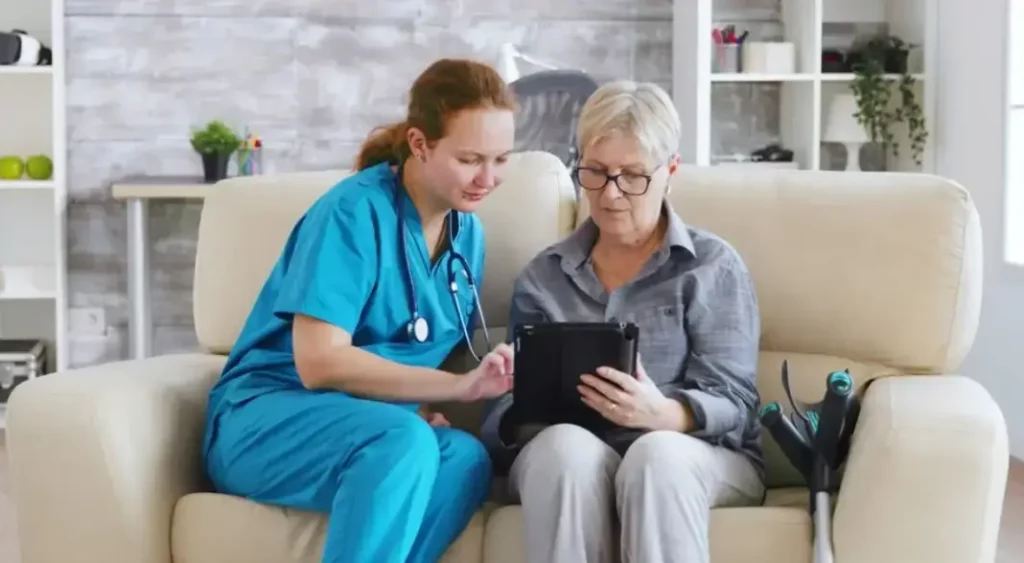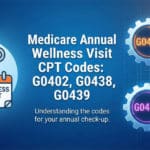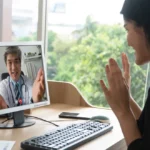Empowering Caregivers with RPM: How It Supports Family Caregiving

Family caregivers play a vital role in supporting patients, but managing chronic conditions at home is challenging. Remote Patient Monitoring (RPM) bridges this gap by giving caregivers real-time health data, reducing stress, and improving patient outcomes.
With remote healthcare gaining tremendous popularity over the years, Remote Patient Monitoring (RPM) is playing a significant role in providing the right care to chronic patients who gain from remote monitoring between in-clinic visits.
As per a study conducted by the National Alliance for Caregiving, there are over 53 million caregivers in the United States who are helping their loved ones by monitoring their conditions, right from medication management to emotional support. The stress that comes with assisting a patient around the clock can be overwhelming. This is where RPM comes into play and provides the support to family caregivers, so they can manage their responsibilities care-free.
RPM uses FDA-approved and connected devices to collect and transmit patients’ vitals, such as heart rate, blood pressure, weight, blood glucose levels, and oxygen saturation. Often in the form of reports, this health data can be tracked in real time and provides both caregivers and healthcare providers with the insights they need to provide better care.
In this blog, we have discussed how RPM is empowering family caregivers to support their loved ones, along with improving the caregiving experience.
- Early Intervention and Monitoring: One of the key features of an RPM program is that it is modeled to monitor a patient’s symptoms and vitals from the comfort of home. There are many remote monitoring devices, including blood pressure monitors, oximeters, glucose monitors, and other wearables that provide real-time updates about health data and send the report right to the providers involved. This helps in identifying the underlying health conditions at an early stage, lowering the chances the hospitalizations, and preventing medical complications later on.
When taking care of an elderly with high blood pressure, RPM technology can help track the blood pressure levels and in case they fall beyond the normal range, a caregiver can intervene and consult the provider for medications.
- Minimizing the Need for Regular Medical Visits: Taking your loved one to a doctor’s appointment is usually the responsibility of a family caregiver who may feel exhausted after a hectic day. Remote patient monitoring enables healthcare professionals to remotely monitor their patients, thereby allowing the caregivers to take care of the patient from the home and reducing the need for in-person visits.
In addition to saving caregivers time and effort, it also helps lower the costs involved in transportation and scheduling medical appointments. RPM’s virtual or remote healthcare model allows caregivers to deliver the right care.
- Real-Time Communication with Healthcare Providers: RPM promotes care coordination that can reduce communication barriers between healthcare practitioners and caregivers. RPM gives caregivers access to the patient’s medical records, allows them to speak with medical professionals directly, and allows them to inquire about the care plan.
This regular communication between the caregivers and healthcare providers makes the former feel more confident in their decision-making and ensures improved quality of care. RPM makes caregiving easier and more transparent, whether it’s setting up follow-up appointments, or handling patient health problems.
- Personalized Treatment: Every patient has different health needs and RPM allows caregivers to personalize treatment plans to match those needs. Caregivers can detect changes in their loved one’s condition and follow the treatment plan as needed by continuously tracking health parameters. If a loved one with diabetes has fluctuating blood sugar levels, the caregiver can collaborate with the healthcare professional to modify the medication plan.
Personalized treatment plans improve outcomes by ensuring that patients receive the right treatment at the right time. For caregivers, this involves taking a more proactive approach to care which reduces the risk of emergencies and hospitalizations.
- Reducing Burnout and Stress in Caregivers: Providing care to an elderly or chronically ill patient is an extremely demanding job. Since caregivers are always concerned about the health of their loved ones, they frequently suffer from stress, anxiety, and burnout. RPM can lessen this stress by providing them with resources that boost their self-assurance and guide them on how to oversee the care of their loved one.
Moreover, caregivers feel less isolated and more supported when they can consult a healthcare provider anytime via an RPM platform. They can rest easy knowing that they are not alone in taking care of their loved one’s health.
- Promoting Independence: RPM technology increases patients’ independence while also empowering care givers. With the assistance of their caregivers and medical professionals, RPM enables patients to keep an eye on their health and make decisions regarding their treatment.
Patients feel more engaged when they have greater control over their health. RPM promotes autonomy and dignity, both of which are essential for mental and emotional health.
Table of Contents
ToggleRPM Is Continuously Reducing The Burden On Caregivers
Remote patient monitoring provides family caregivers’ access to much sorted and managed caregiving by delivering more effective, proactive, and individualized care. By providing real-time health data and improving communication with healthcare providers, RPM is easing the burden of caregiving.
As remote care technology continues to develop, it could revolutionize the experience of providing care and enhance the lives of patients and caregivers. By using RPM, caregivers can better manage the health of their loved ones while also taking back control of their own wellbeing.
HealthArc’s RPM platform offers features that help boost patient health, engagement, outcomes, and satisfaction ratings, allowing healthcare practices to implement care programs more quickly and conveniently. It is designed to assist caregivers in achieving their ultimate goal of improving patient care.
Key takeaways
- RPM provides caregivers with real-time access to patient vitals and health data.
- Early alerts help prevent emergencies and reduce hospital visits.
- Caregivers gain confidence and peace of mind with clinical support.
- RPM strengthens collaboration between families and healthcare providers.
- Better monitoring leads to improved patient safety and quality of care.
Frequently Asked Questions (FAQs)
Remote Patient Monitoring (RPM) uses connected devices to track patient vitals at home and securely share the data with healthcare providers in real time for timely care.
RPM lightens the caregiver load. It sends alerts, keeps the latest health snapshots coming, and offers clinical support, so caregivers can decide the next step more confidently.
RPM works wonderfully for long-term issues like diabetes, high blood pressure, heart failure, lung disease, and healing patients fresh from surgery.
Definitely! Caregivers can track data through apps or online dashboards the clinics share. This way, they can jump in when the numbers change.
Yes. Because RPM automates most of the checking and keeps medical teams in the loop, the extra workload drops, and caregivers feel more relaxed.
RPM keeps watch for any numbers that don’t match the patient’s normal range. When that happens, alerts fly out, giving caregivers the chance to step in before things worsen.
Yes! Medicare and lots of insurance plans pay for RPM under special coding, so the costs don’t always come out of pocket.
Absolutely! RPM is perfect for older adults, letting family members keep track of health while skipping the regular trips to the doctor.
Want to take your care delivery experience to the next level? Schedule a demo today and learn more about our remote patient monitoring software and services.
Most Recent Blogs
Categories
Related Blog
- November 26, 2025 | Read Time: 14 mins
Return on Investment (ROI) of Remote Patient Monitoring (RPM): A Complete Guide for ACOs and Healthcare Organizations
The U.S. healthcare system continues its transition from fee-for-service models to value-based...
Learn More- November 24, 2025 | Read Time: 15 mins
Common RPM Pricing Models for Providers: A Profitability-Focused Guide
Remote Patient Monitoring (RPM) has rapidly emerged as one of the leading...
Learn More- October 23, 2025 | Read Time: 12 mins
How RPM Devices Improve Hypertension and Diabetes Outcomes in Medicare Populations
Remote patient monitoring (RPM) is transforming chronic care for Medicare beneficiaries. CMS...
Learn More


